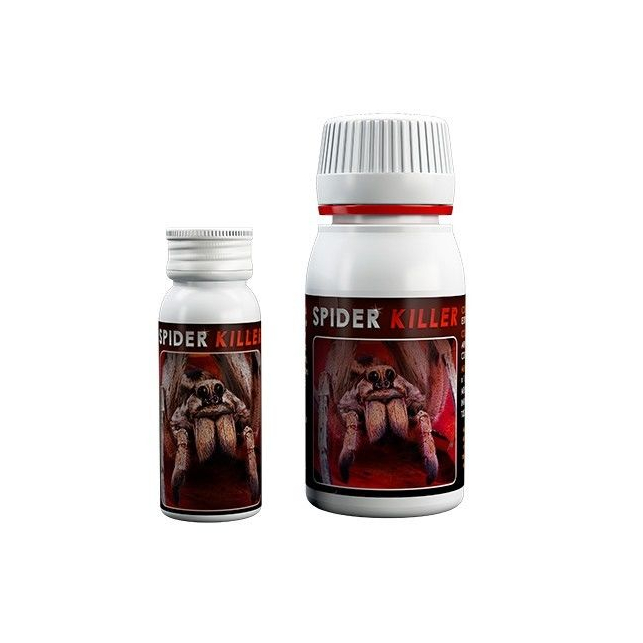

In constant struggle for the regulation of cannabis, mainly in the medicinal field.
23-12-2020 17:00:20 - Updated: 23 December, 2020
When working with cultivations like cannabis, it is necessary to be careful and take certain precautions to avoid damaging the crops long before their flowering period. Factors such as humidity, weather and temperature when summer approaches can significantly affect the integrity of this type of cultivation, bringing consequences such as the appearance of fungi, insects or different types of pests.
To reduce the problems with cannabis plants that are related to these factors is necessary to have an effective pest control during flowering. To do this you can apply various preventive methods that will help you to preserve the quality of your crops, especially in those months when there is a lot of heat.
1.Ensuring hygiene in the crop
One of the main ways to prevent diseases and pests of cannabis is to maintain the hygiene of the crop. To do this it is essential to remove any remaining dead or decomposing plant material, and to clean the container or plant container constantly in case you have an indoor cultivation.
On the other hand, in outdoor crops it is worthwhile to ensure that the soil is in a suitable area where the plants are not crowded and have good ventilation and lighting. Some plants such as mint or rosemary can work as an insect repellent, so keeping them close is convenient. It can also help to remove some lower branches in the crop to get better aeration and get rid of small insects that attack in that area.
2. Monitoring temperature and humidity
For indoor cultivation where it is possible to control parameters such as humidity and temperature, the ideal is to keep them at optimal levels that contribute to the development of the variety. It is important to have good cooling and ventilation systems, to use humidifiers, to install low energy LED bulbs that turn on at night and to monitor all the time the conditions of the culture with the appropriate instruments.
In the case of outdoor crops, the possibilities of controlling temperature and humidity are limited. This is why a good choice of soil with adequate ventilation without excessive draughts is so important. To cover the planting from the excess of sunlight, it is advisable to cover the crop with anti-trip meshes that imitate the conditions of a greenhouse and that have an arrangement that keeps them aired.
3. Choosing a suitable variety
To be able to take advantage of your crops and to avoid the presence of plagues in the cannabis cultivation room, it is indispensable to make a correct choice of the variety you want to cultivate. Some strains are more prone to adapt to the adverse conditions of the summer and to resist plagues of insects like the red spider.
Crops like Easy Haze or Heaven’s Fruit are ideal varieties for indoors that also have a shorter flowering period. Outdoors, where crops are more exposed and susceptible to fungal infections such as powdery mildew or botrytis, it is preferable to choose varieties that better support humidity conditions such as Tropimango or FruityJack.
4. Using pest prevention products
Another option quite effective to prevent fungi or insects in the crops is to use products such as fungicides or insecticides, preferably of natural origin, which are recommended for plantations such as cannabis. These, combined with various wetting agents, can enhance their effectiveness to achieve the best results.
Among the most popular products are Neem oil and potassium soap, which are ideal for preventing mites such as red spider, white fly, thrips and fungi. Cinnamon extract is also recommended by many botanists for its effectiveness against mites and for its antioxidant and regenerative properties that strengthen plant defenses.
Other products with a wide spectrum such as Bacillus Thuringiensis, chrysanthemum extract, the so-called horsetail, sulfur or propolis, which also provides multiple vitamins to the crop, are perfect as preventive products against different pests. There are also several chemical products such as penconazole, spiromesifen, triazole fungicides, and many others that are used in outdoor crops to prevent pests. However, these should be used as the very last option.

SPIDER KILLER is a poison and fortifier 100% natural, to produce nutrients and enzymes to metabolic system of your beloved plant. It will be a very efficient product against spider mites, thrips, nematodes, cochineal, aphids and other insect pathogens.
It is used by foliar spraying, added 0.5 to 1 ml of product per liter of water.
If you use it with other products use the lowest dose.
Composition of Spider Killer Bactofil:
Product rich in cinnamon (Cinnamomumzeylanicum)
5. Applying the products properly
Many of the products mentioned above are photosensitive, so they should be applied with low light. Furthermore, they are recommended exclusively for the vegetative or growth stage of plants and never in stages close to their flowering period. Knowing the most common pests near growing areas and the conditions under which they appear makes it easier to select a suitable product to deal with the problems associated with cannabis plants.
Treatment for growing plants
- After a couple of weeks or after each transplant, it should be watered with trichoderma to keep the roots healthy and protected.
- Apply broad-spectrum products at least once a week.
- Spray plants with water every two weeks.
- Two weeks before flowering apply Bacillus Thuringiensis spray (in outdoor crops a weekly application during the month of July is recommended).
- One week before the beginning of the flowering applyhorsetail.
Treatment in flowering stage
- Use only products suitable for the start of this stage, following the instructions of each manufacturer for proper use.
- At the beginning of flowering apply broad-spectrum insecticides.
- On the fourth day apply sprayed propolis.
- Five days later, re-apply insecticide.
- The next 4 days apply cinnamon, propolis or any antifungal.

⭐ Conclusion
In indoor crops it is not advisable to change plants to flowering that have the presence of some kind of pest. On the other hand, in the flowering stage you must be careful when applying products and not use those with systemic action. Remember that it will always be easier to apply good prevention methods at the right time than to treat the plant once it is attacked by pests.





